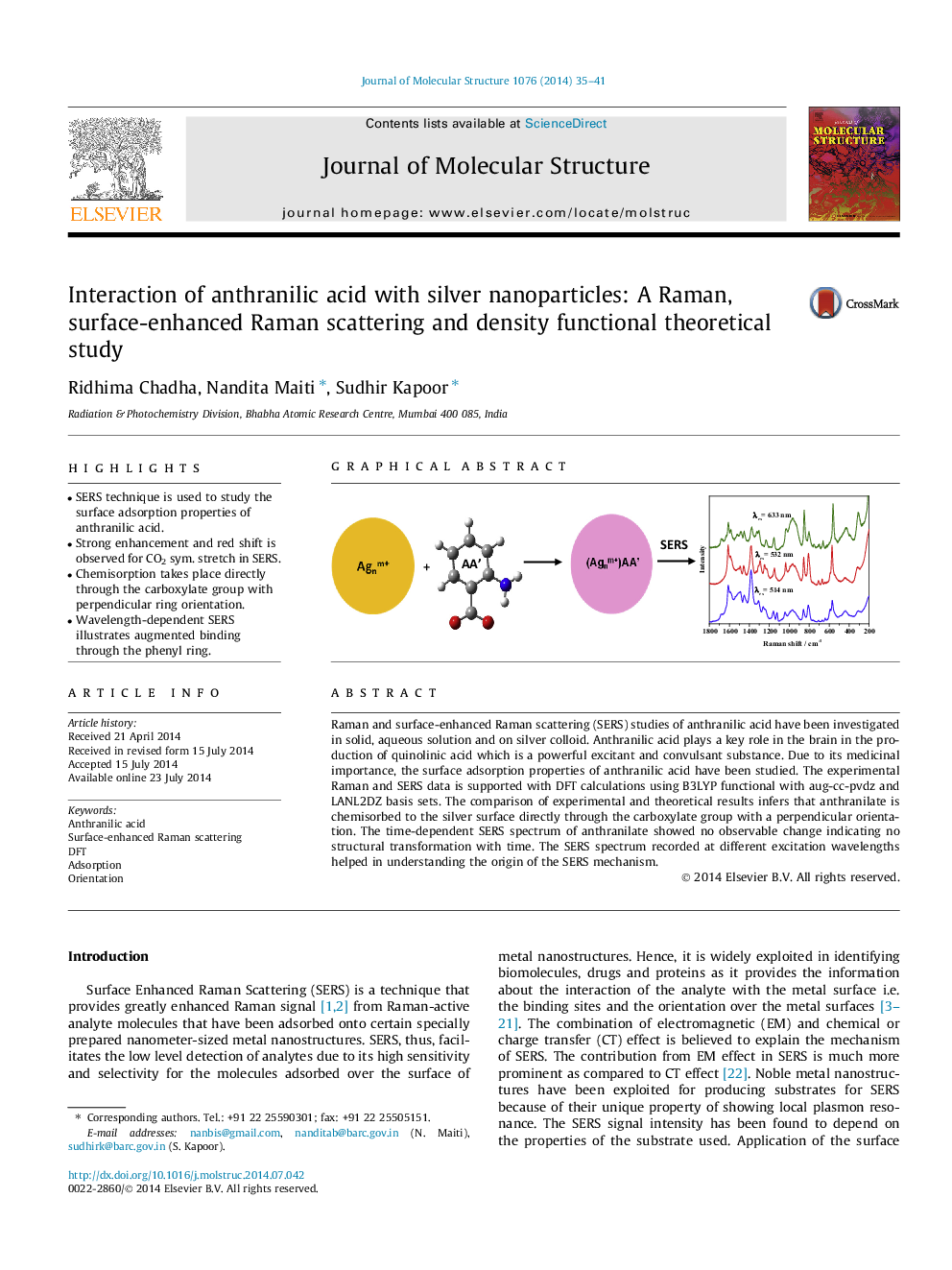| Article ID | Journal | Published Year | Pages | File Type |
|---|---|---|---|---|
| 1408423 | Journal of Molecular Structure | 2014 | 7 Pages |
•SERS technique is used to study the surface adsorption properties of anthranilic acid.•Strong enhancement and red shift is observed for CO2 sym. stretch in SERS.•Chemisorption takes place directly through the carboxylate group with perpendicular ring orientation.•Wavelength-dependent SERS illustrates augmented binding through the phenyl ring.
Raman and surface-enhanced Raman scattering (SERS) studies of anthranilic acid have been investigated in solid, aqueous solution and on silver colloid. Anthranilic acid plays a key role in the brain in the production of quinolinic acid which is a powerful excitant and convulsant substance. Due to its medicinal importance, the surface adsorption properties of anthranilic acid have been studied. The experimental Raman and SERS data is supported with DFT calculations using B3LYP functional with aug-cc-pvdz and LANL2DZ basis sets. The comparison of experimental and theoretical results infers that anthranilate is chemisorbed to the silver surface directly through the carboxylate group with a perpendicular orientation. The time-dependent SERS spectrum of anthranilate showed no observable change indicating no structural transformation with time. The SERS spectrum recorded at different excitation wavelengths helped in understanding the origin of the SERS mechanism.
Graphical abstractFigure optionsDownload full-size imageDownload as PowerPoint slide
